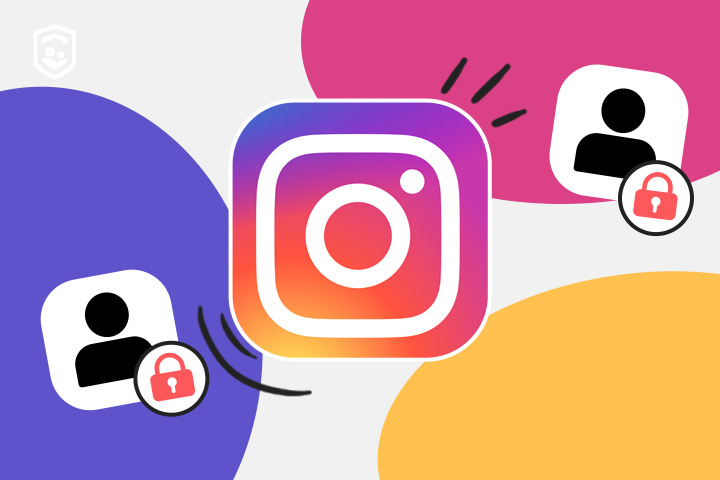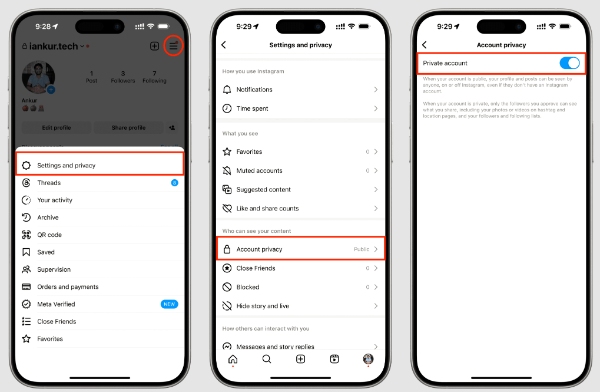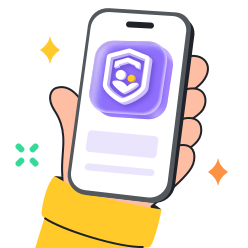Instagram is one of the most famous social media platforms among young users. It enables innovation, self-disclosure and communication in terms of photographs, videos and stories. Nevertheless, the trending query “the Instagram private account viewer” has also highlighted the complexities and privacy risks associated with such tools. If it promises to break privacy, it’s breaking trust.
This article will explore Instagram’s privacy features, debunk myths around “private account viewers,” and provide a guide for maintaining a secure online experience for all readers. Let’s figure out whether any legitimate service lets you view private Instagram accounts.
What is an Instagram private account viewer?
Instagram private account viewer is a tool that purports to unlock private profiles as quickly. They usually assure that they can access hidden private Instagram content without being noticed. Others even say they are able to display followers, stories and messages even without logging in.



In fact, its security infrastructure is robust and prevents unauthorized access to private accounts. Instagram does not offer any external tools and APIs that bypass privacy settings.
The websites or applications that claim it are mostly fraudulent. They usually require the user to write usernames, passwords, or verification codes. Such information, when entered, can be stolen and used for ill ends. There are no legitimate third-party tools that can bypass the Instagram private account settings.
Teach privacy early and empower teens to question and think before tapping.
Instagram private account settings to empower users
Instagram offers privacy options that give end users complete control over what they want accessed and by whom. When users make their accounts private, only approved followers can view their posts, stories, reels, or live videos. This helps users avoid unwanted attention and stay safe from strangers or possible harassers.



Private account settings enable young users to share intimate moments safely, limiting exposure and reducing risk. If a profile is private, even search engines cannot display its contents. Unauthorized users will not be able to view the information in links to personal posts.
Various interaction management tools, such as “Hidden Words,” “Close Friends,” and “Restrict,” for additional safety are also available on Instagram; check details in the Privacy Settings Guide. Users can block or restrict other users, moderate comments and determine who can tag or mention them.
These options promote responsible sharing and assist users in having full control of their online identity. One of the most important aspects of safe digital behavior is to teach teenagers to learn how to use these tools and understand them.
Legitimate and safe ways to view Instagram private profiles:
- Sending a follow request: This is the only official, respectful, and secure method to access a private Instagram account’s content. You can try to send a request, wait for approval, and respect the user’s decision.
- Connecting through mutual friends (with permission): We suggest asking a mutual friend to introduce you or to share specific content only with the explicit consent of the private account holder. This should always be done respectfully and with permission to avoid privacy breaches.
Why teens seek tools to view private Instagram account
Curiosity, feelings and social pressures, teens may show interest in a private Instagram account for various common motives.
- Curiosity
The adolescent stage is an age of curiosity. Some teenagers may take an interest in their peers, classmates, or influencers who limit their content. This curiosity may easily lead them into dangerous places on the internet, and they believe that counterfeit tools can give them easy access.
- Social anxiety or FOMO
Among the young people, fear of missing out (FOMO) has strength. They can fear not being included in discussions or trends. The fear of being unaware may lead them to risky internet practices.
- Interpersonal problems
Attempts to spy on private accounts are also commonly fuelled by conflicts or emotional attachments. A teenager may want to check an old friend’s or ex-partner’s account. Emotional decision-making can weaken their caution and lead them into unsafe online spaces.
- Cyberbullying or harassment
In other cases, this intent is not curiosity but related to bullying or stalking. Victims may want to know what the bullies are up to, while perpetrators may want to get more information. This bends over the ethical boundaries, and the teen might face disciplinary or legal repercussions.
Many teenagers are unaware of threats on the Internet, let alone how phishing or scams work. They may lack the ability to recognize misinformation and scams, and do not know the serious consequences of using such tools, including privacy breaches and legal risks.
Dangers of attempting Instagram private account viewer
There is never any safety in using an Instagram private account viewer. It goes against ethics and security measures. Instagram’s Help Center explicitly warns users against such tools. The following are the key risks posed by the tools.
Account hacking and personal data leaks
The counterfeit personal account viewers are phishing sites that gather personal information. Cybercriminals buy this data and use it to commit fraud. Hackers break into accounts, change passwords, and take control. After hacking an account, criminals use it to spam or send phishing links and malicious content. It is difficult and time-consuming to restore.
Identity theft
Criminals can commit identity theft using stolen information. The scammers may pose as the victims on the Internet, or make up fake accounts, or perform criminal activities in the name of the victim. The psychological and reputational harm of identity theft may take years to fix.
Malware or viruses
Most of these tools download malware onto devices. Malware is able to track activity, files or key strokes. It may also install malicious programs that compromise their machines or destroy systems. Other malware can encrypt files and then require payment, as is common in ransomware.
Blackmail scams
Collected data is also used to blackmail some scam sites. They can pose a threat of leaking personal information in case victims do not pay money. Teenagers are the most susceptible to this kind of manipulation, and they are often too afraid to ask for help.
Violating Instagram’s terms of service
Trying to access personal content without the required permission violates Instagram’s Terms of Service. Instagram may suspend or permanently ban accounts that engage in such activity. Misuse may often lead to additional legal or administrative repercussions.
These threats provide a definite reality that there is no safe way of avoiding Instagram privacy. The alleged prize of inquiry is never compensated for by the permanent harm. The privacy and adherence to the rules of the platforms safeguard the virtual integrity of all people.
Parental Guidance: Helping teens stay safe from privacy scams
Even the most tech-savvy parents can feel overwhelmed by the pace of social media trends. When your teens stumble across terms like “Instagram private account viewer”, it’s not always about wrongdoing. The key for parents is to respond calmly and foster a safe environment for digital growth. Prevention requires awareness, education, and communication.



Recognize warning signs
Parents are also expected to be vigilant about any changes in their child’s behavior. Too much confidentiality, fear of social media, or suspicious device activity may indicate a red flag. Users should pay attention to unexpected downloads or visits to suspicious websites.
Start open conversations
Communicate with online curiosity without being judgmental. State the reasons as to why the viewers of private accounts are insecure and illusory. Inspire adolescents to inquire about online privacy. Harmless, relaxed conversation builds confidence and promotes good, responsible conduct. Make them remember that online gentleness and respect translate into real-life values. Using a positive example as a parent can help to strengthen healthy online behavior.
Set clear online boundaries
Develop a clear code of etiquette in using the internet. Keep the privacy preferences of your teen to yourself. Educate them to block, limit or report suspicious users. Emphasize that the privacy of other people is not up for debate.
Teach critical thinking
Teach teens how to recognize phishing websites and fraudsters. Describe typical warning signs, including unrealistic offers or demands. Request them to check the authenticity of sources before clicking or downloading. Online fraud can be best prevented through critical thinking.
Use parental controls wisely
Parental monitoring tools like FlashGet Kids can be a lifesaver for keeping kids safe from harmful apps and content. It has an app blocker that restricts new downloads (including malware) onto the mobile device. Moreover, you can set up browser safety features within this app to restrict your child’s access to Instagram private account viewers.
Get professional assistance if necessary
If your child faces threats, scams, or emotional distress, act immediately. In case of blackmail or hacking attempts, inform Instagram and the appropriate authorities. When under the strain of mental health, consult a professional counselor. Timely intervention can prevent long-term damage.
Parental intervention is never about repression, but rather protection. Online literacy and support develop lifelong safer behaviors.
Conclusion
No legitimate and safe Instagram private account viewer exists. All services claiming to bypass Instagram’s privacy system are fake. These tools can compromise the user’s information and account security. Instagram enables one to manage their audience and interactions. These attributes play an important role in protecting personal space online.
Adolescents may give in to restlessness, peer pressure, or emotional impulses. Illegal access is immoral and dangerous. The role of parental prevention is vital. Educate and help teens make informed choices through open communication, essential knowledge, and empathy. The families ought to collaborate in enhancing digital safety and respect.

